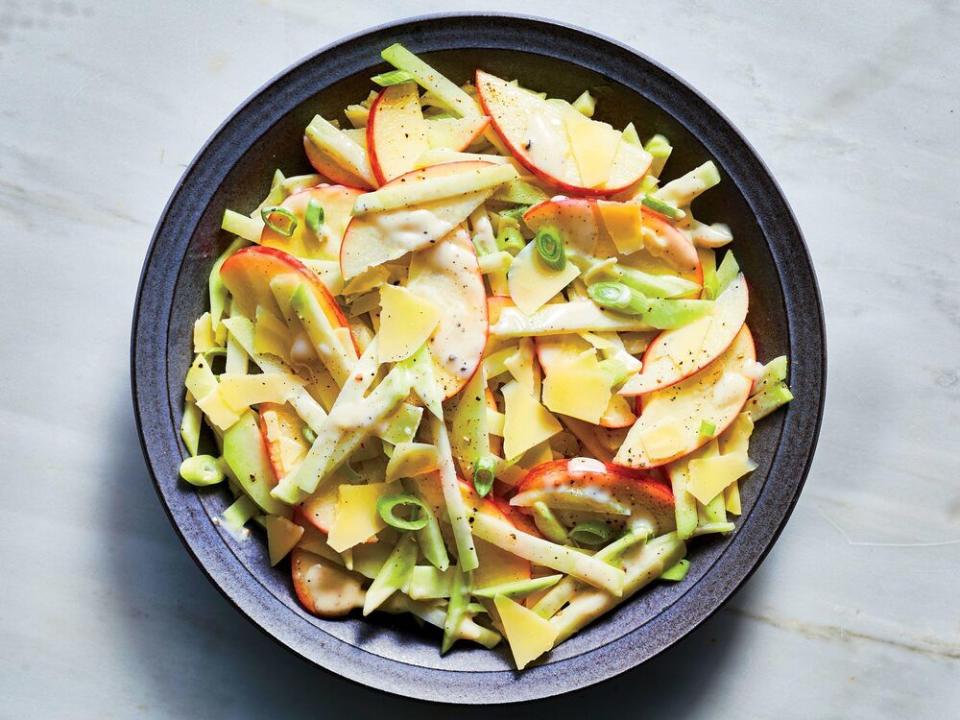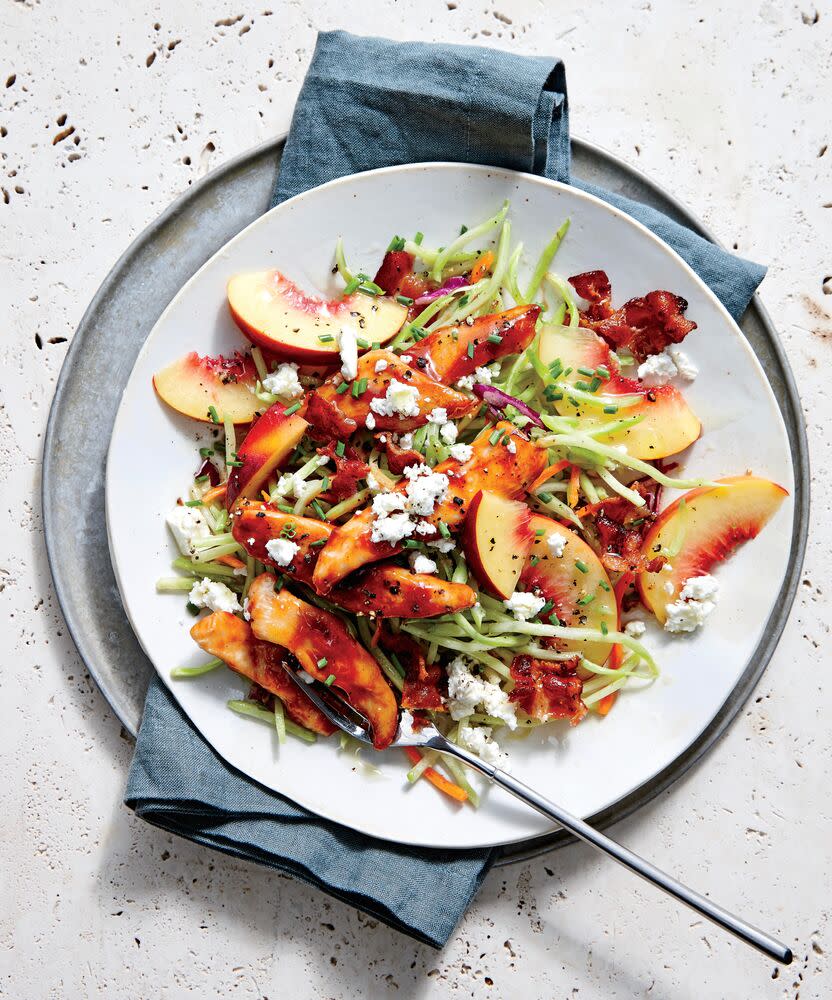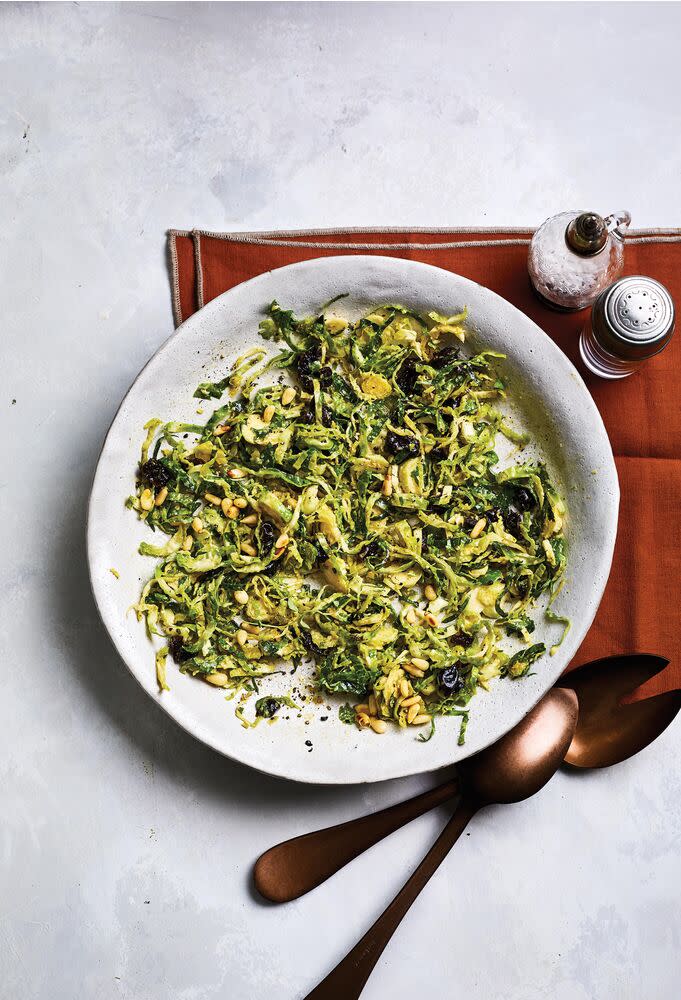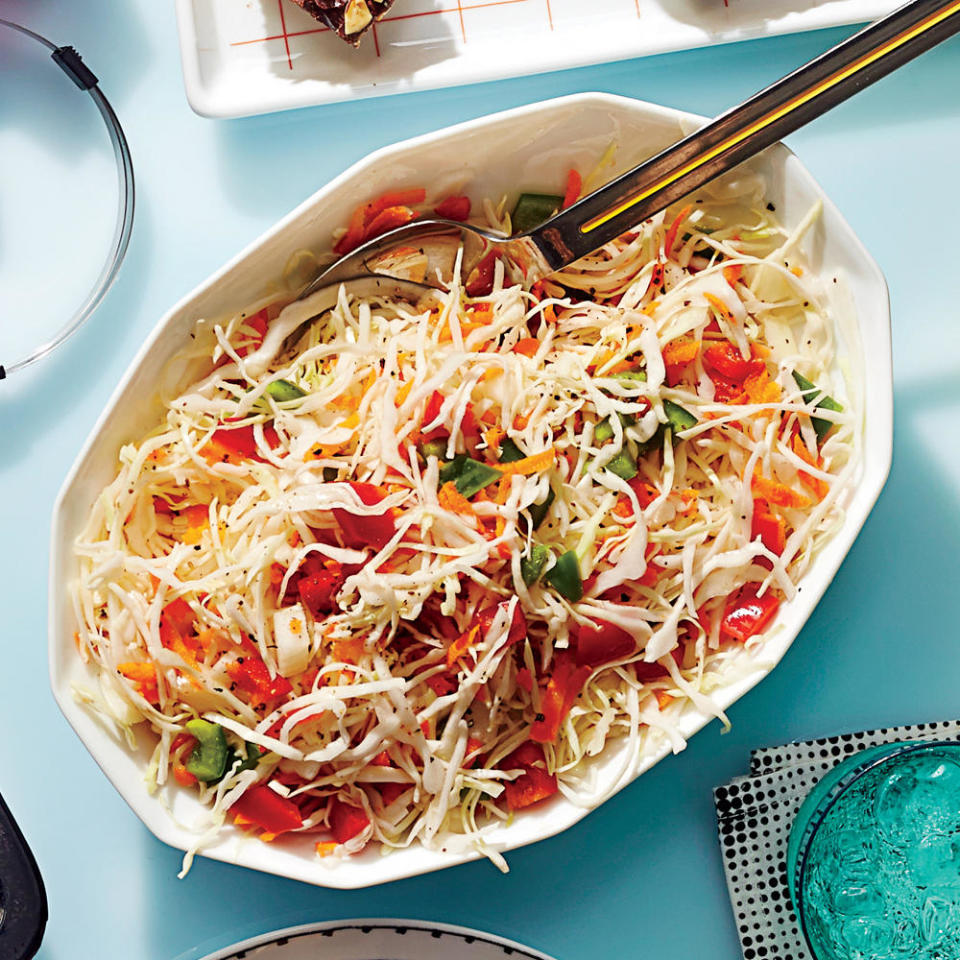How to Make Your Best Coleslaw Yet
It’s almost springtime, which means that for cooks who prefer to shop in-season, brassica time is upon us. Whether you crave kale or you're a die-hard fan of cabbage, you’re sure to notice plenty of fresh greens in the produce section, nestled next to the similar bounty of early spring lettuces. Of course, you could cook down all those newly harvested cabbages and collards, but if you’d rather enjoy your veggies with a bit more crunch, consider making another classic brassica application: slaw.
Sure, you can buy a bag of pre-shredded coleslaw mix for your first cookout of the year, but slaw is a worthwhile cooking project to make from scratch, largely because of how versatile it can be. If you’re not a fan of cabbage, you can simply slice up another type of green and use that as your foundation instead. Slaw can be sweet, savory, warm, vinegary, and even mayonnaise free—the only hard rule is that it must contain some sort of thinly sliced, preferably crunchy vegetable. Whether you’re an old hand at the side dish, or trying to make it for the first time, use this guide as an opportunity to make your best batch to date.

Step One: Choose Your Slaw Base
Get the Recipes: Basic Coleslaw, Kohlrabi and Apple Slaw, Colorful Collard Slaw, Broccolini Slaw, Shaved Broccoli and Brussels Sprouts Slaw, Tangy Red Cabbage Slaw, Cilantro-Cabbage Slaw, Celery-Ranch Slaw
Before setting into pulling your slaw together, you’ll obviously want to decide what kind of slaw to make. Basic, Southern coleslaw calls for a base of Savoy and red cabbage, but you can use any type of cabbage you like, as long as you can slice it thinly. If you’re not a fan of cabbage, or if you want to spice up your coleslaw mixture, you can use broccolini, collard greens, jicama, bok choy, celery and even herbs like cilantro in your base. Make sure, when slicing your slaw base up, to ensure that the pieces are bite-sized, but still easy to pick up with a fork.
As with any salad preparation, be sure to rinse the fresh greens under cold water to remove any dirt or pesticides. This can be done either before or after chopping them up. Proceed to dry completely with clean towels.

Step Two: Choose Your Mix-Ins
Get the Recipes: Peach and Feta Slaw, Peach-Ginger Slaw, Peanutty Coleslaw, Mango-Jalapeno Coleslaw, Spicy Slaw, Cranberry-Almond Coleslaw, Pickled Onion Slaw
Once you decide on your coleslaw base, you can think about what other ingredients would go well in your finished dish. Julienned carrots are a classic choice, but peppers (jalapeno, habanero or serrano) can also be thinly sliced for a bit of heat. Fruits like mangos, apples, and peaches can also be added for a coleslaw that veers more toward a savory-sweet profile. Bite-sized berries, like cranberries or blueberries, are also a fine addition. If you like your coleslaw more savory, peanuts or almonds might be a nice choice. And of course, if you’re a fan of cheese, you can crumble up a bit of your favorite varieties; feta, for example, would go well in most slaws as a salty accent.

Step Three: Choose Your Dressing
Get the Recipes: Jicama and Grapefruit Slaw with Creamy Lime Dressing, Creamy Coleslaw, Brussels Sprout Slaw With Lemon and Pecorino, Tangy Mustard Coleslaw, Creamy Ancho Slaw, Coleslaw Raita with Mint, Kale and Blueberry Slaw with Buttermilk Dressing
Your slaw is finely shredded and your mix-ins are evenly distributed throughout the base. Now, it’s time to add a finishing dressing to bring your coleslaw together. If you’re a fan of classic, Southern coleslaw, then you’ll want a bit of vinegar, some dill and celery seed, and a lot of mayo. But if you want a creamy finish without the mayonnaise, you may prefer using Greek yogurt, or even making a raita-style coleslaw by adding mint. Ancho chiles can impart great, fiery flavor to a coleslaw binder, and vinegar-based dressings can be turned to when dairy-based dressings are off the menu altogether. As with choosing the base or mix-ins, there are no hard and fast rules here outside the bounds of your palate.
Additonal Slaw Styles

How to Make Freezer Coleslaw
Get the Recipe: Freezer Coleslaw
If you’d like to take advantage of your early spring veggies, but you’re not ready to dig into coleslaw just yet, you could always make up your coleslaw ahead of time and freeze it. After you make up the slaw, put it in a heavy-duty freezer bag with a zip top, and squeeze out any extra air. When you’re ready to eat it, simply thaw for three hours and dig in. The frozen slaw should keep for up to a month if stored correctly.
How to Make Warm Coleslaw
Get the Recipe: Warm Bacon and Herb Coleslaw
Traditionally, coleslaw is a thoroughly chilled dish, but there’s no reason you can’t add some heated ingredients or warm up your dressing for a salad with plenty of temperature variation. For this less traditional take on coleslaw, try cooking some bacon and tossing it in with your greens along with some cooked shallots and caramelized onions. If you’d like, use the bacon drippings as the fat for a custom warm vinaigrette, which will taste fantastic drizzled over fresh, vibrant greens.

